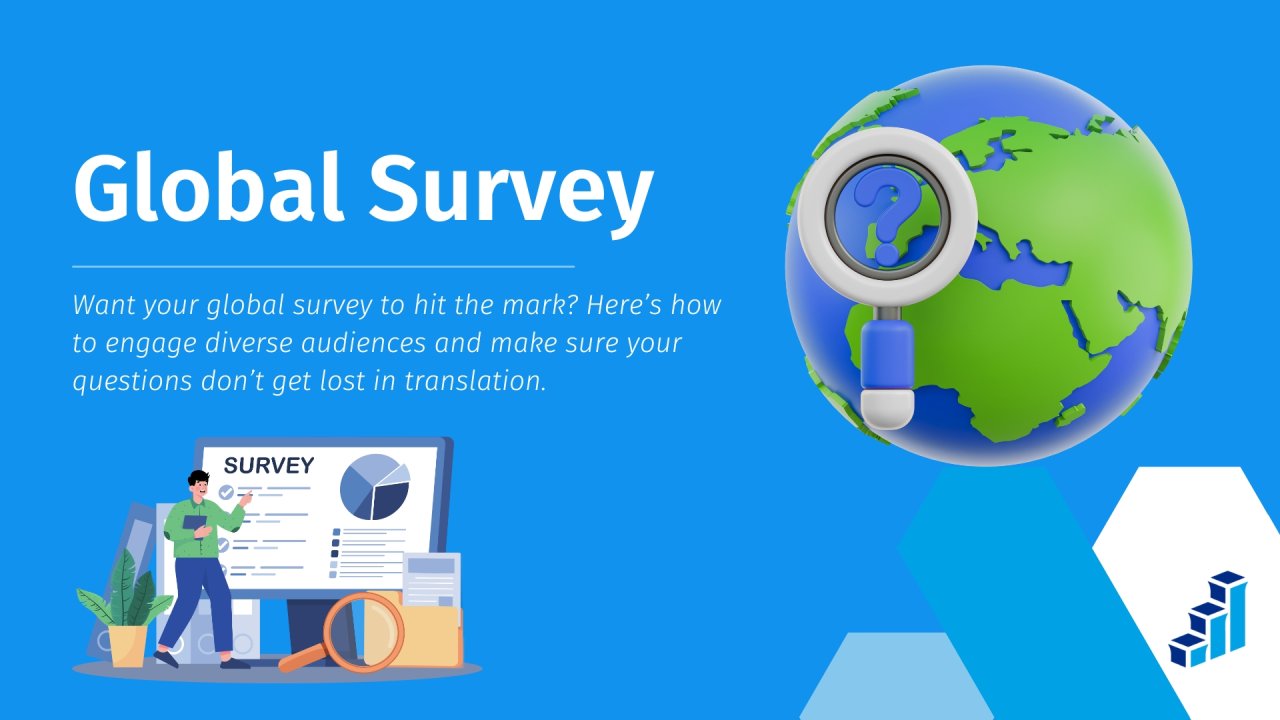
Global Survey Tips to Engage Diverse Global Audiences
Reaching audiences across borders is a superpower for businesses and organizations, and global surveys are the key to unlocking what people think.
But creating surveys that resonate worldwide is no easy feat. Language barriers, cultural nuances, and compliance headaches can quickly turn a global project into a logistical nightmare.
That’s where smart tools like Polling.com step in. Its survey platform takes the complexity out of multilingual surveys, making it easier to collect real-time customer feedback from a global audience.
What Is a Global Survey and Why It Matters
A global survey collects data from respondents across multiple countries, capturing diverse perspectives for sharper decision-making and international survey results.
Whether it’s a global attitudes survey or a survey healthcare global, these online surveys fuel market research, customer feedback, and political polling by revealing what drives people worldwide.
For example, a global brand like a sneaker company might use customer satisfaction surveys to learn why Europeans love their designs but Asians want bolder colors.
Key Challenges in Global Survey Deployment
Running a multilingual survey sounds exciting until you hit the roadblocks. Language mishaps, cultural disconnects, and legal red tape can derail even the best global survey.
Here’s what to watch out for.
Language and Translation Accuracy
Translating a survey isn’t just about switching from English to Spanish; it’s about making sure the meaning stays intact.
Literal translations can confuse respondents or change the question’s intent entirely. For example, a poor translation might turn “How satisfied are you?” into “Are you full?”, and it’s not ideal for a customer survey.
To avoid misunderstandings, professional localization is key.
Survey platforms like Polling.com support multilingual formatting, letting you build and manage surveys in dozens of languages without sacrificing clarity or tone.
Cultural Nuances and Response Bias
Culture influences how people interpret questions and how they respond.
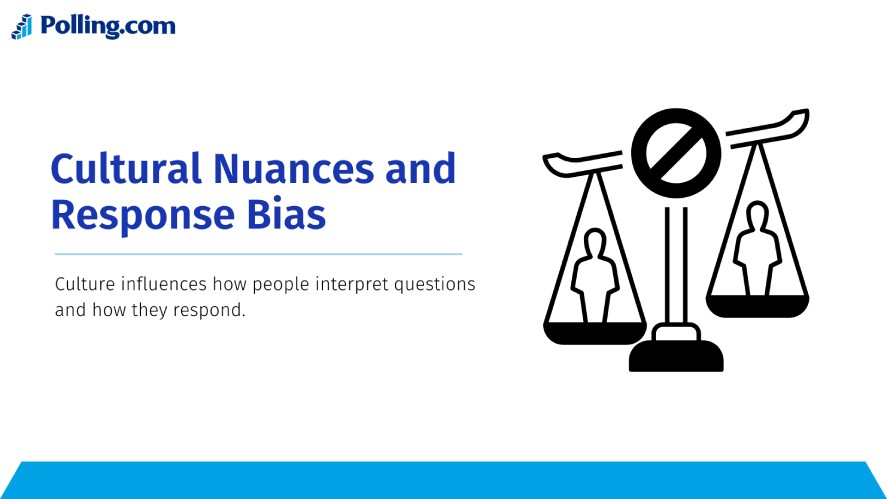
In some regions, people avoid extreme answers out of politeness, while in others, direct feedback is the norm. A 3-star rating in one country might mean “great”, while in another, it signals dissatisfaction.
That’s why it’s important to adjust your questions based on local norms.
Legal and Data Compliance Considerations
When you’re surveying globally, it’s not just about good data; it’s about lawful data.
Regulations like CCPA in the U.S. and GDPR in the EU require careful attention to how data is collected, stored, and used. Miss a step, and you could face fines or lose user trust.
To stay compliant, you need clear consent forms in every language and robust data security measures.
Features to Look for in a Global Survey Tool
Not all survey tools are built for the demands of global data collection. If you’re aiming to reach respondents across different countries, languages, and internet environments, you need a platform that can keep up.
Here are the key features to prioritize.
Multilingual Survey Support
Your survey platform should do more than just swap languages, it should deliver culturally relevant and accurate experiences.
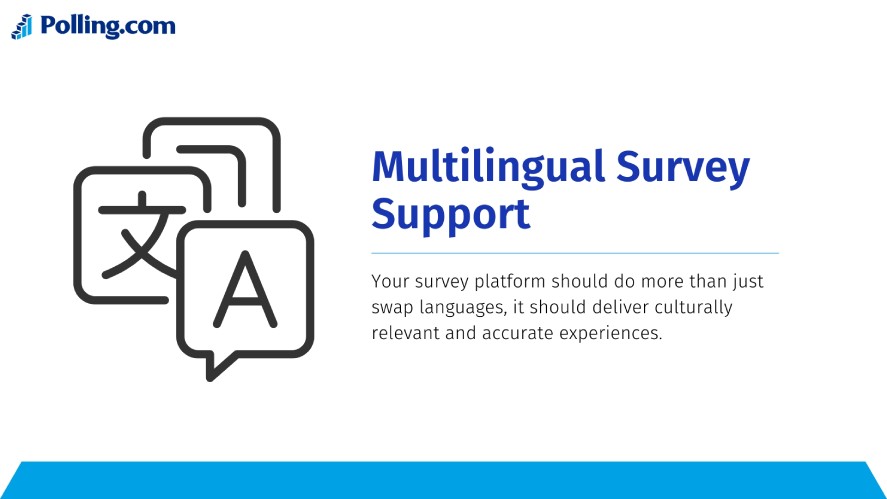
Look for tools that offer both auto-translation for speed and the ability to plug in human translations for quality control.
Smart language selection logic is also a must, automatically showing the right language based on the respondent’s browser or location settings.
Mobile Responsiveness & Global Accessibility
In many regions, especially emerging markets, mobile is the primary (or only) way people access the internet.
That means your surveys need to be fully responsive on all screen sizes and optimized for low-bandwidth environments.
A tool that loads quickly, even on slower connections, ensures your global audience stays engaged and completes your survey.
Geo-Targeting and Regional Customization
Global doesn’t mean one-size-fits-all.
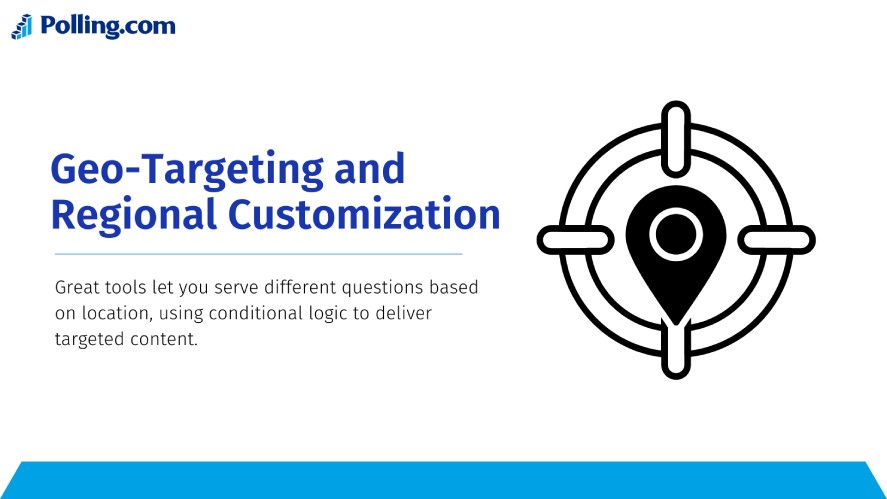
Great tools let you serve different questions based on location, using conditional logic to deliver targeted content.
Bonus points if you can view regional breakdowns in your analytics, helping you compare responses by market without needing a data science degree.
Why Polling.com Is the Best Tool for Global Surveys
Among the many platforms out there, Polling.com stands out by design. It’s built for scale, simplicity, and international reach.
Here’s why it’s the go-to choice for cross-border surveys:
- Native multilingual support with a clean, intuitive UI
- Custom translation integration so you can fine-tune every word
- Built-in regional compliance tools that help you stay GDPR and CCPA safe
- Scalable infrastructure that supports everything from lean startup teams to global corporations
Compared to tools like Typeform, Google Forms, and SurveyMonkey, Polling.com offers deeper customization, stronger localization, and better compliance tools—all without sacrificing ease of use.
Whether you’re running a quick feedback poll or a cross-border research study, this free survey creator delivers where others fall short.
Best Practices for Launching a Global Survey
Running a global survey isn’t just about translation; it’s about cultural intelligence, planning, and smart execution.
Here’s a step-by-step guide to getting it right.
Step 1 – Plan with Local Expertise Before Writing a Global Survey
Global doesn’t mean generic.
Before writing questions, collaborate with local consultants, regional managers, or bilingual team members who know the cultural, political, and behavioral norms of each target market. They can:
- Flag sensitive topics or phrasing that might offend or confuse
- Suggest region-specific examples that feel relevant
- Advise on timing. For instance, avoiding national holidays or elections
Bonus tip: Involve these local voices early in the survey design, not just translation, to bake cultural understanding into your core questions.
Step 2 – Use Clear and Culturally Neutral Language
Even when surveys are translated accurately, unclear or idiomatic language creates barriers.
Aim for short, direct, and unambiguous phrasing. Try to avoid:
- Idioms (spill the beans, once in a blue moon)
- Slang or corporate jargon (synergy, touch base)
- Double-barreled questions (How satisfied are you with the price and quality?)
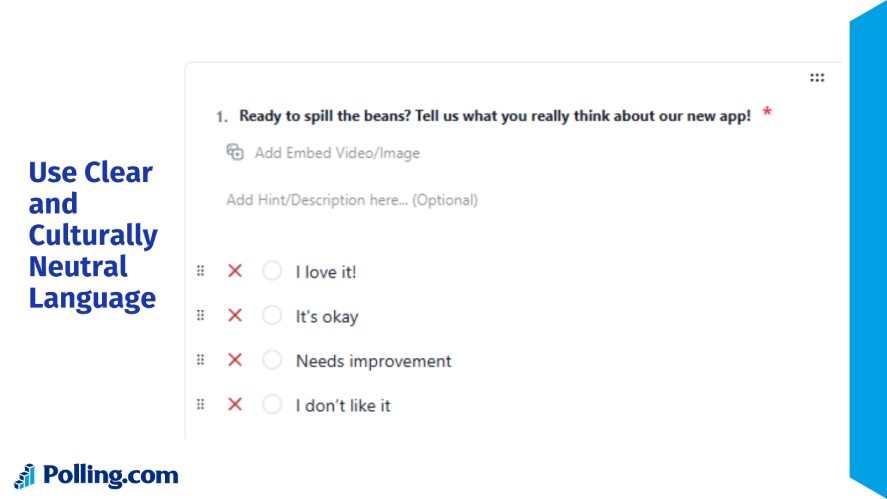
Also, remember that tone matters. What’s seen as friendly in one culture might be seen as too casual in another.
Use professional but approachable language that works across contexts.
Step 3 – Pilot Test Your Survey in Multiple Regions
Testing is crucial. Run localized pilots in a sample of each major target market.
During the pilot phase, you should:
- Collect qualitative feedback on question clarity and flow
- Identify skipped or abandoned questions that may signal confusion
- Ensure logic branches and translations are functioning correctly
A successful pilot not only improves data quality but builds trust among your international respondents, especially in cultures where surveys are less common.
Step 4 – Analyze Data with Cultural Context
Don’t just compare averages, you should understand what those numbers mean in context.
For example:
- In some East Asian cultures, respondents may avoid extreme scores out of politeness
- In parts of Latin America, enthusiastic language is more common, skewing responses upward
- Even definitions of satisfaction vary. The “okay” might mean good enough in some places, but a red flag in others
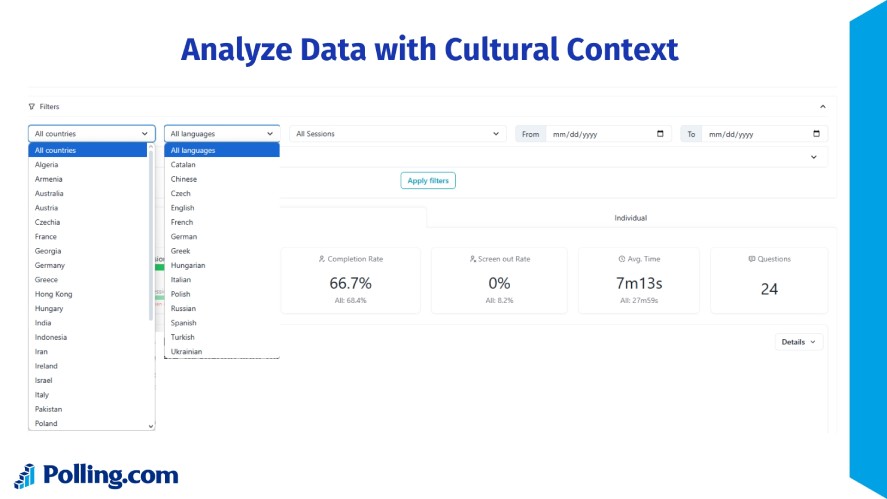
Use tools that allow demographic and geographic segmentation, so you can break down insights by country, language, or even cultural clusters. And where possible, bring local experts back in to interpret nuanced findings.
How to Handle Data Compliance for Global Surveys
Running international surveys isn’t just about translating questions; it’s also about complying with different data laws across borders.
When you’re collecting and analyzing transnational survey analysis, you’re also handling sensitive user data from multiple jurisdictions, each with its own set of rules.
Why Data Compliance Matters
Failing to meet local data protection standards can result in serious legal consequences, damage to brand trust, and even restrictions on your survey operations.
Whether it’s GDPR in the EU, CCPA in California, or POPIA in South Africa, the message is clear: protect participant data or face the consequences.
Extracting Global Polling Insights, Responsibly
Global polling insights are only valuable when they’re ethically and legally sourced.
Businesses often rely on these insights to shape marketing strategies, product development, or policy decisions. But to do so safely, compliance must be built into the data pipeline from the start.
Here are tips for staying compliant across borders
- Collect Explicit Consent: Make sure respondents agree to how their data will be used. Use clear opt-in forms that specify data usage, storage duration, and third-party access if any.
- Use Regional Data Storage: Some countries require that their citizens’ data be stored locally. So, choose platforms or cloud services that offer geo-specific storage options.
- Anonymize and Minimize: Only collect what you need, and strip away personally identifiable information when possible. Anonymization helps reduce compliance risk if data is ever breached or shared.
- Offer Opt-Out Options: Respect users’ right to withdraw consent at any point. Make it easy for them to opt out or request data deletion, and honor these requests promptly.
- Audit Your Tools: Ensure any survey tools you use are also compliant.
When your transnational survey analysis respects legal boundaries, the global polling insights you extract become not only more ethical but also more reliable.
Compliance isn’t a box to tick; it’s a foundation for trust across every culture and customer base you engage with.
Case Study: Successful Survey Global Using Polling.com
Imagine a global nonprofit launching a climate awareness campaign across 12 countries.
With Polling.com, they deployed a multilingual survey in under a week with localized consent forms, mobile-optimized design, and regional logic to tailor questions by country.
The result? A 67% response rate, powerful insights across continents, and messaging that resonated from Nairobi to New York.
Thanks to built-in compliance and seamless language support, the team avoided legal pitfalls and saved weeks of manual setup.
Lesson learned: With the right tool, global surveys don’t have to be hard; they just have to be smart.
Conclusion
Going global with your survey can unlock game-changing insights, but only if you plan with precision, respect cultural nuance, and use the right tools.
Polling.com makes that easy with its multilingual engine, compliance-first features, and smooth user experience.
Ready to go global? Start your international survey today with Polling.com’s free tools!
